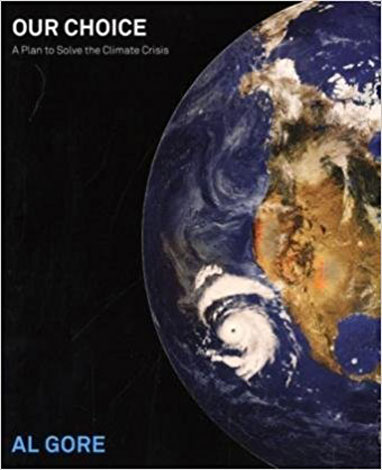“Our Choice gathers in one place all of the most effective solutions that are available now and that, together, will solve this crisis. It is meant to depoliticize the issue as much as possible and inspire readers to take action―not only on an individual basis but as participants in the political processes by which every country, and the world as a whole, makes the choice that now confronts us.”
Author Al Gore
Toward the end of the documentary film An Inconvenient Truth, Al Gore is presenting his slide show about climate change to an audience in China. He pauses to take questions, and a young woman asks what many of the film’s viewers must be anxiously asking themselves as well – what can individuals do about global warming? Gore answers that we need to acquaint ourselves with the basic facts of global warming, and then pressure our governments to take action.
Gore’s sequel to An Inconvenient Truth is Our Choice, A Plan to Solve the Climate Crisis, in which he describes what those actions should be. The changes that must take place in the supply of energy, in its distribution, and its use are on a global scale, beyond the ability of individuals to affect directly. The choices that we make as consumers are vital, but Gore’s message is clear: they alone are not enough. Important changes must be undertaken by nations and groups of nations. These actions should be to:
- impose a tax on carbon dioxide emissions by utilities and industries
- institute “cap and trade” that allows some industries to offset their emissions (https://www.edf.org/climate/how-cap-and-trade-works)
- place an absolute maximum limit on emissions by utilities and industries
- require that utilities use renewable energy sources to provide electricity
Our Choice describes many different technologies that produce electricity. Some of these, such as wind power, are already employed on a global scale and are growing rapidly. Some, such as nuclear power, are already significant energy sources but do not appear to present a path forward. And others, such as second-phase biofuels, are still experimental. “Energy” and “power” here refer to producing electricity for light and heat in buildings, etc. Fuel used for transportation is usually discussed separately. Gore discusses the main technologies that are already available and that show the most promise.
The first chapter of Our Choice provides background information about the six types of atmospheric pollutants that are causing climate change. As expected, carbon dioxide (CO2) is the largest contributor but, given the contention around it, it may come as a surprise that it is responsible for less than 50% of the total warming. This is encouraging because the remaining pollutants, such as soot and carbon monoxide, are all obvious health hazards, plus limiting their production requires simpler technology than is needed to remove the CO2 created by burning fossil fuels – so there should be less opposition to reducing them.
After reviewing the science of global warming, Our Choice considers a wide range of ways to best generate the energy we need and to better use what we produce. There are two main ways to account for the world’s energy budget – by how it is generated or by how it is used, and it is important to be clear about which total is being discussed. Our Choice concerns only the former. Fossil fuels – coal, natural gas, and oil – account for about 85% of worldwide energy production, and they must either be replaced by renewable sources or have the CO2 in their emissions captured before it enters the atmosphere (see CCS below).
Energy Storage and the Super Grid
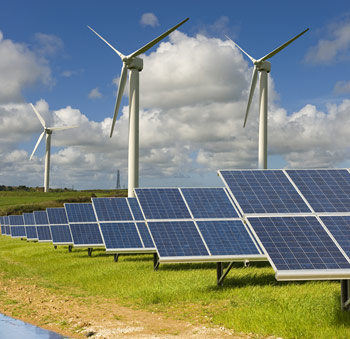
The two renewable technologies with the most promise are solar and wind. But both can only produce power intermittently, when the sun shines or the wind blows. To offset this problem, renewable sources like these can sometimes be yoked together to yield a more predictable and controllable output – for example, solar and wind can fill in for one another, especially since wind tends to be stronger in the dark. When the location of these sources make pairing impractical, the economic viability of the plant will depend on its capacity to store energy during peak production and dispense it later.
Once the fraction of energy produced by renewable sources increases beyond about 20% of regional consumption, it becomes economically vital to store the excess. By far the most common storage method is to use solar or wind power to pump water up behind a dam to generate hydroelectric power for later use. But this does not lend itself to widespread deployment because solar energy plants are often situated in areas far from the nearest dam and dam construction in the US and elsewhere has already been maximized.
New methods are needed, but energy storage overall has lagged in development. Improving the performance of batteries is one of today’s hottest areas of research, stimulated by the growing popularity of electric cars (a large fleet of electric cars would itself be an important source of energy storage). New battery technologies that promise better energy storage include those made from paper or powered by bacteria.
A different approach to the problem of uneven supply is to send surplus power immediately to where it’s needed. For this to work, the handling capacity of the grid needs to be much higher than it is now in order to transfer great quantities of power across long distances. Building this new “super grid” would be a complex undertaking, requiring fully interconnected and very high voltage power lines spanning continental distances, with intelligent monitoring of demand and supply at the many nodes of the grid. For all of its cost and complexity though, the super grid would repay its investment many times over. Unlike today’s ac technology, high-voltage dc cables can be routed for great distances undersea; and they can also be buried, which avoids the problems and visual impact of transmission towers.
Solar
There are two very different ways that sunlight is used to produce electricity: directly by illuminating semiconductor solar cells which then emit an electrical current, or by focusing sunlight to heat a liquid that is then used to power a turbine and generator. While there are many different variations of these two methods, at present they all produce electricity that is more expensive than that made by burning fossil fuels. Solar power has two other shortcomings: since sunlight can only produce electricity when the sun is shining, solar plants are best located in deserts. This makes construction difficult and expensive.
Despite these drawbacks, solar energy continues to be vigorously pursued, because even with just today’s technology, solar alone could supply several times the total energy needs of the world. Solar power production could be a boon to many impoverished regions; for example, there are proposals to develop large solar installations in northern Africa and have an advanced power grid channel that electricity across the Mediterranean to Europe. In addition to its obvious advantages as a simple source of clean, renewable power, it is expected that solar technology costs will continue to fall while long term fossil fuel costs will continue to rise. Operating a solar plant is relatively simple and low-maintenance, and the “fuel” is free. New and improving energy storage technologies should help mitigate the current problem of intermittent power output.
Wind
Wind power is the fastest growing source of new energy. Electricity produced by wind-powered generators is currently around 4% of the world’s total. Like solar, wind power is variable, and energy storage will be critical for wind power to take on a larger role. Constructions costs per unit of energy are high but the cost of a single windmill is comparatively inexpensive, and units can be added piecemeal to increase site output, which spreads out costs. Once installed, these generators are cheap to operate and require no water or other resources; and recent designs employ much larger, slower rotating vanes that are both quieter and reduce bird mortality.
Although the wind obviously varies from day to day, yearly averages of wind speed are very consistent. To be practical, sites must be located where the average speed is more than 15 mph (25 kph). Offshore wind is stronger and steadier than on land, with no hills or other obstructions, but construction and maintenance costs are significantly higher. Wind power is the preferred form of renewable energy in Europe where off-shore wind farms are common, in the North Sea for example. At the time of writing this book, Denmark was the leader with over 40% of its total energy needs produced by wind, and a survey of favorable sites in the US suggested that wind was capable of contributing 10% of the nation’s future power needs.
Geothermal

Geothermal energy uses the heat from deep inside the Earth to heat a liquid that then powers a turbine and generator to produce electricity. To date, geothermal energy yields a small but constant fraction of the energy total, but Gore is enthusiastic about its prospects – he uses geothermal energy to heat and cool his own home. Thus far geothermal plants have had to be located where underground reservoirs of hot water bubble to the Earth’s surface – the largest such plant is The Geysers in California.
There are only a limited number of such places in the world, but recent drilling technology developed for shale gas (fracking) may provide many additional sites. Fracking allows access to high-temperature fluids in deep, semi-permeable rock formations. But, like any drilling, reaching gas deposits is unpredictable. In theory, converting unproductive drilled areas could make geothermal the largest single source of energy. A geothermal energy plant is compact, inexpensive to operate and has a constant power output. However, this technology entails the same environmental risks as does fracking, the greatest of which is the possibility of toxic fluids leaking into the water table. The widespread development of geothermal energy would very likely require a major government program.
Biofuels
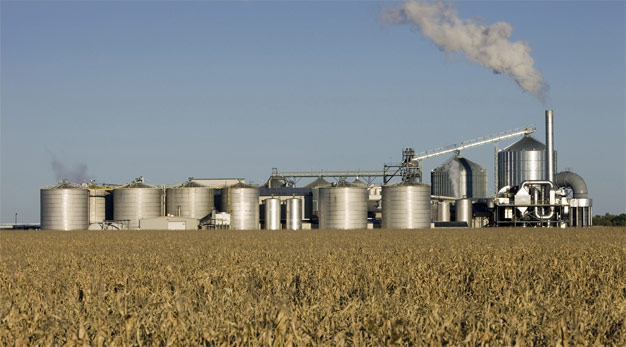
Biofuels are produced by raising crops, typically corn, that are converted into fuel, typically ethanol. Biofuels can be thought of as a type of solar energy, using chlorophyll to convert sunlight into liquid fuel. Unlike the other types of renewable energy, which all generate and distribute electricity from power plants, liquid biofuels replace the petroleum products used for transportation. Biofuels have even been used in commercial airliners. Making biofuel however has been fraught with problems, although ethanol is still in widespread production. As it turns out, ethanol fuels may not reduce carbon dioxide emissions – in fact, depending on the details of how they are made, producing and using ethanol fuels may emit more carbon dioxide than it saves.
Gore writes that his early, hopeful advocacy of biofuel was a mistake. In addition to its dubious contribution in reducing climate change, diverting crops to ethanol production appears to have contributed to global food shortages. But much has been learned from the experience of making biofuel from corn. Second-generation biofuels are now made from inedible plants that do well in soil not fit for most food crops, and take little if any fertilizer, which is another source of greenhouse gases. Crops like switch grass, for example, yield profitable quantities of ethanol; but the transition to using them has been slow because they are tough and hard to process.
Nuclear
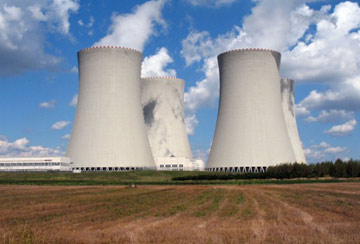
The common objections to nuclear power are well known: the fear of accidents and the disposal of waste that remains radioactive for thousands of years. But Gore believes that construction costs, long lead times, and weapons proliferation from enriched fuel are even greater problems (to these worries, we must add the threat of terrorists targeting the power plants themselves). France, which produces about 75% of its electricity from nuclear plants, is often cited as a nuclear success story, but Gore largely discounts this industry because it inevitably involves large government subsidies.
Our Choice was written before a tsunami struck the Japanese nuclear plants at Fukushima in 2011, after which many nations began to phase out nuclear plants. Nevertheless, more nuclear plants are either under construction or in the final planning stages than at any time in the last 25 years, mostly in countries with no oil reserves and with state-controlled economies. In the view of the Intergovernmental Panel on Climate Change (IPCC) – the UN organization formed to study climate change with whom Gore shared the Nobel Prize in 2007 – expanding safe nuclear power is necessary to prevent greenhouse gases from reaching catastrophic and irreversible levels. The industry is struggling however to find a new standardized reactor design that would be safer and cheaper.
CCS
In addition to its wide ranging survey of alternate, renewable energy, Our Choice also discusses a variety of ways to reduce the emissions from existing fossil fuel sources. These include conserving energy, so that less fuel is burned, using natural gas in place of coal, because burning natural gas emits significantly less CO2 than coal, and capturing the emissions from coal-fired plants. Gore is frankly skeptical of “carbon capture and sequestration,” or CCS because it has proven costly and difficult. Again, however, according to the IPCC, it will not be possible to prevent CO2 emissions from reaching truly dangerous levels without implementing CCS, because there are thousands of plants in operation that will continue burning coal for decades to come.
Land Use
Gore discusses an additional and important means of reducing emissions – improving the ways we use the land. Today agriculture and forestry produce 20% of the greenhouse gases in the United States, and relatively simple changes in land use may not only greatly reduce these emissions but actually absorb as much as 40% of all CO2 emissions – and be of benefit to the land itself! The first few feet of the world’s soil can store several times more carbon than is present in the atmosphere, potentially an enormous natural carbon capture bank. Adding this captured carbon in the form of biochar, a type of charcoal, can replenish depleted soils, which reduces the need for chemical fertilizers and also enhance the soil’s ability to filter drinking water. In a similar way, modern science-based forestry practices enable harvesting timber for homes and furniture while retaining, and even increasing, the ability of forests to capture the carbon being added to the atmosphere.
Conclusion
Our Choice is equally divided between explaining renewable energy and explaining the changes that must take place in society if we are to mitigate the climate change threat. These societal changes, and the changes in our group thinking that must accompany them, are discussed in detail in many essays on this Human Journey website. Some people have despaired at the enormity of the threat of climate change, but despair only serves the goals of those who would profit by our inaction. Most experts on global warming say that we still do have time to avert the worst outcomes. As Gore puts it, we should feel a sense of joy that those of us alive today have the chance to undertake an historic mission worthy of our best efforts.
Gore’s interest in change is primarily through the political process. He recommends that to effect change in this process, we donate to the election campaigns of climate-aware candidates, join climate education groups like The Climate Reality Project, and use social media to spread awareness and action.
Says Gore, “There is an old African proverb that says, ‘If you want to go quickly, go alone; if you want to go far, go together.’
“We have to go far, quickly.
“We can solve the climate crisis. It will be hard, to be sure, but if we can make the choice to solve it, I have no doubt whatsoever that we can and will succeed.”
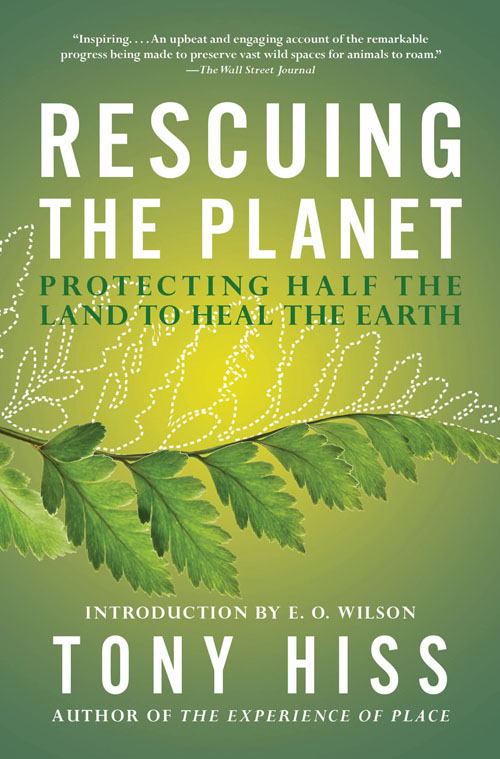
Rescuing the Planet
Protecting Half the Planet to Heal the Earth
Tony Hiss
Could it be possible to set aside half the earth’s land and sea for nature by the year 2050? Former New Yorker staff writer Tony Hiss investigated the feasibility of this ambitious idea proposed by biologist Edward O. Wilson and emerged inspired and surprisingly optimistic.
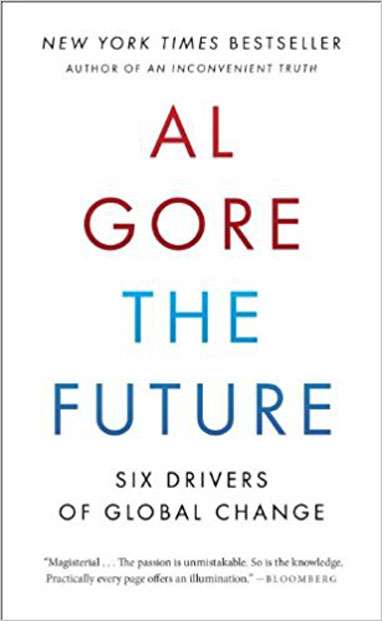
The Future
Six Drivers of Global Change
Al Gore
No period in global history resembles what humanity is about to experience. Explore the key global forces converging to create the complexity of change, our crisis of confidence in facing the options, and how we can take charge of our destiny.
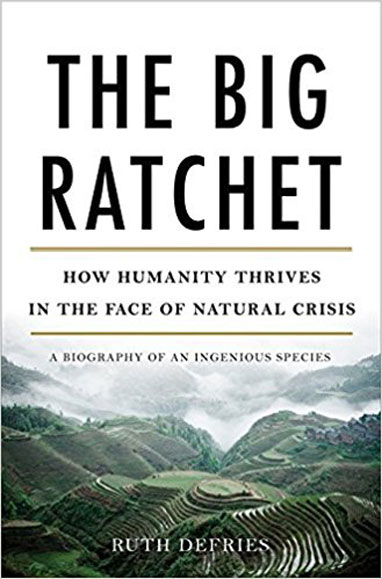
The Big Ratchet
How Humanity Thrives in the Face of Natural Crisis
Ruth DeFries
Human history can be viewed as a repeating spiral of ingenuity—ratchet (technological breakthrough), hatchet (resulting natural disaster), and pivot (inventing new solutions). Whether we can pivot effectively from the last Big Ratchet remains to be seen.
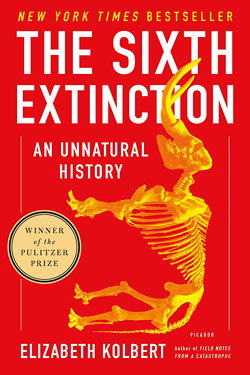
The Sixth Extinction
An Unnatural History
Elizabeth Kolbert
With all of Earth’s five mass extinctions, the climate changed faster than any species could adapt. The current extinction has the same random and rapid properties, but it’s unique in that it’s caused entirely by the actions of a single species—humans.

Natural Capitalism
Creating the Next Industrial Revolution
Paul Hawken, Amory Lovins & L. Hunter Lovins
A new definition of capitalism that fully values natural and human resources may hold the keys to a sustainable future.
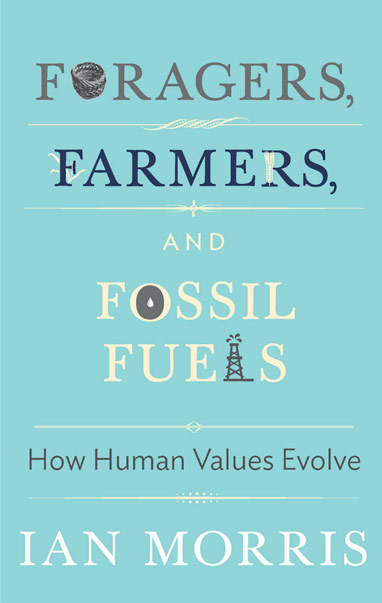
Foragers, Farmers, and Fossil Fuels
Ian Morris
Human social development, says Morris, is constantly generated by environmental and social factors. The amount of energy that can be extracted from the environment through technology defines the social possibilities, and thus influences the attitudes and world view of each epoch.
In the series: A Sustainable Planet
- Our Finite Planet
- Our Climate Crisis—and What We Can Do About It
- The Rocky Road to a Sustainable Future
- Our Looming Global Water Crisis
- Our Plastic Earth
- Rescuing the Planet by Tony Hiss
- The Future: Six Drivers of Global Change
- The Big Ratchet
- The Sixth Extinction
- Natural Capitalism
- Foragers, Farmers, and Fossil Fuels
Related articles:
Further Reading »
Further Reading
External Stories and Videos


Al Gore: The Case for Optimism on Climate Change
TED
Al Gore, founder and chairman of The Climate Reality Project, poses three questions that will determine the future of our planet---and why there’s good reason to be optimistic.

